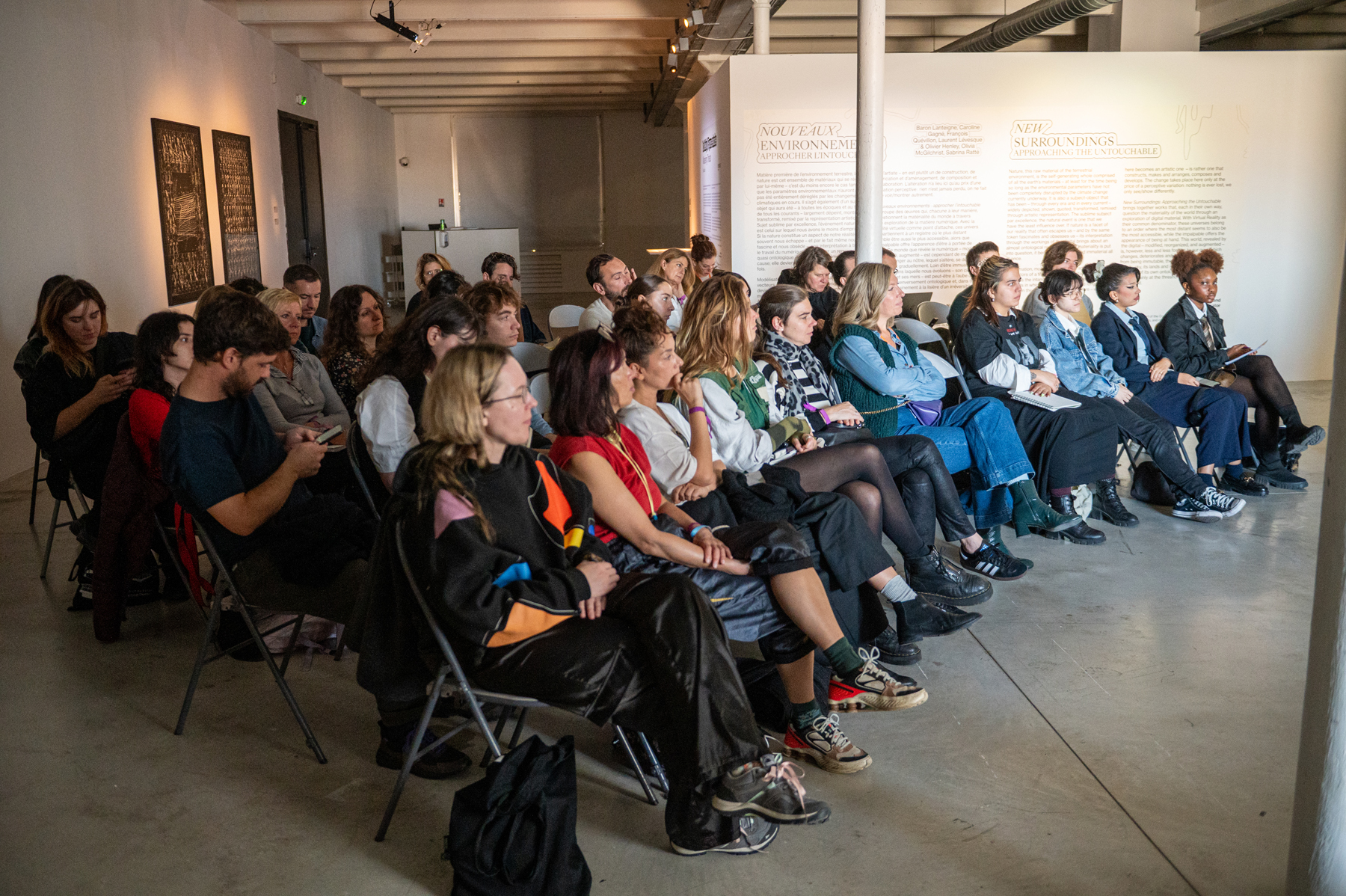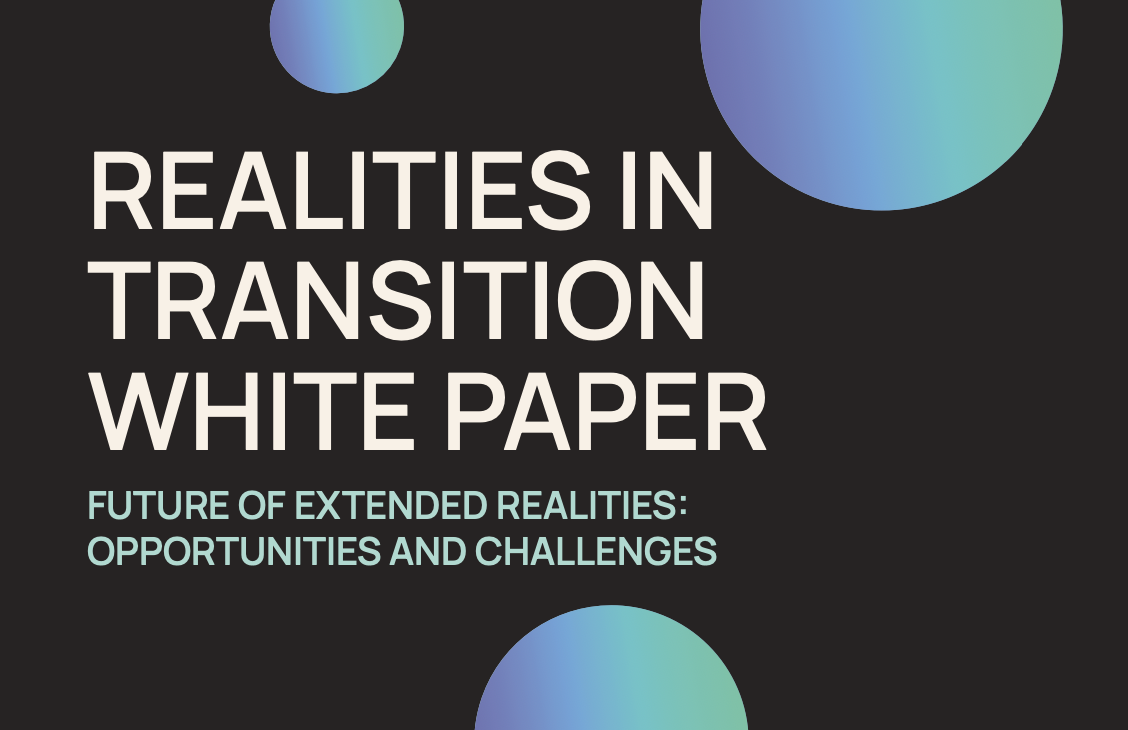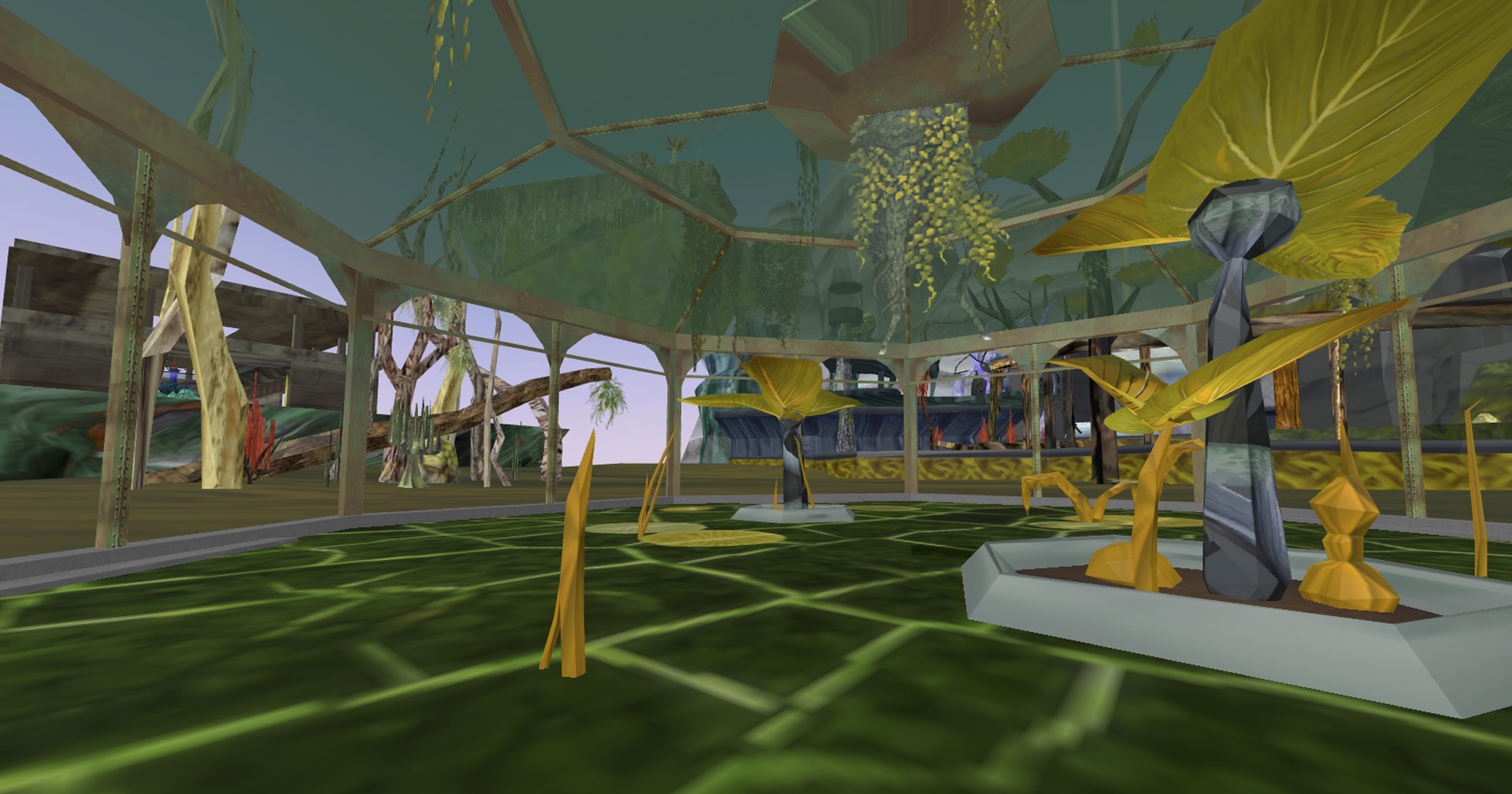Crafting Playful Realities: A Dialogue with Marlot Meyer & Leo Scarin
“XR can also be about… showing a layer that was already there but that we couldn’t see before…”
Marlot Meyer & Leo Scarin were one of the 7 selected artistic project for the first #RiT artistic residency, back in May 2023, in V2_ (Rotterdam). In this framework, Dark Euphoria asked them about their relationship to XR, their artistic path and favorite tools. With this 7 out of 7 special interview, discover Marlot Meyer & Leo Scarin unique look on eXtended Realities…!
Dark Euphoria | In
Dark Euphoria | Interviewer: Céline Delatte – Grateful to take this valuable time with you two. “The Algortihm of Care” makes me feel like you have a very aware and sensitive (in multiple senses) relationship to eXtendedRealities. It’s soft, inspiring – and definitely disruptive. Could you each share with us your specific journey; approach and feelings about that?
Dark Euphoria | In
Marlot Meyer – …My work focuses mainly on expanding the awareness of the human experience to incorporate more than just the human experience. It has always been based in this physical body and this physical space, but still using technology as a tool to show what else is out there that we can’t see with our own eyes or our own senses, but could actually, if we know it’s there, it could give us more meaning.
Leo Scarin – My work is basically just playful, alternative ways of researching. I research technology’s social, political, and increasingly ecological impact through the use of immersive or interactive installations. That’s basically my medium.
Dark Euphoria | In
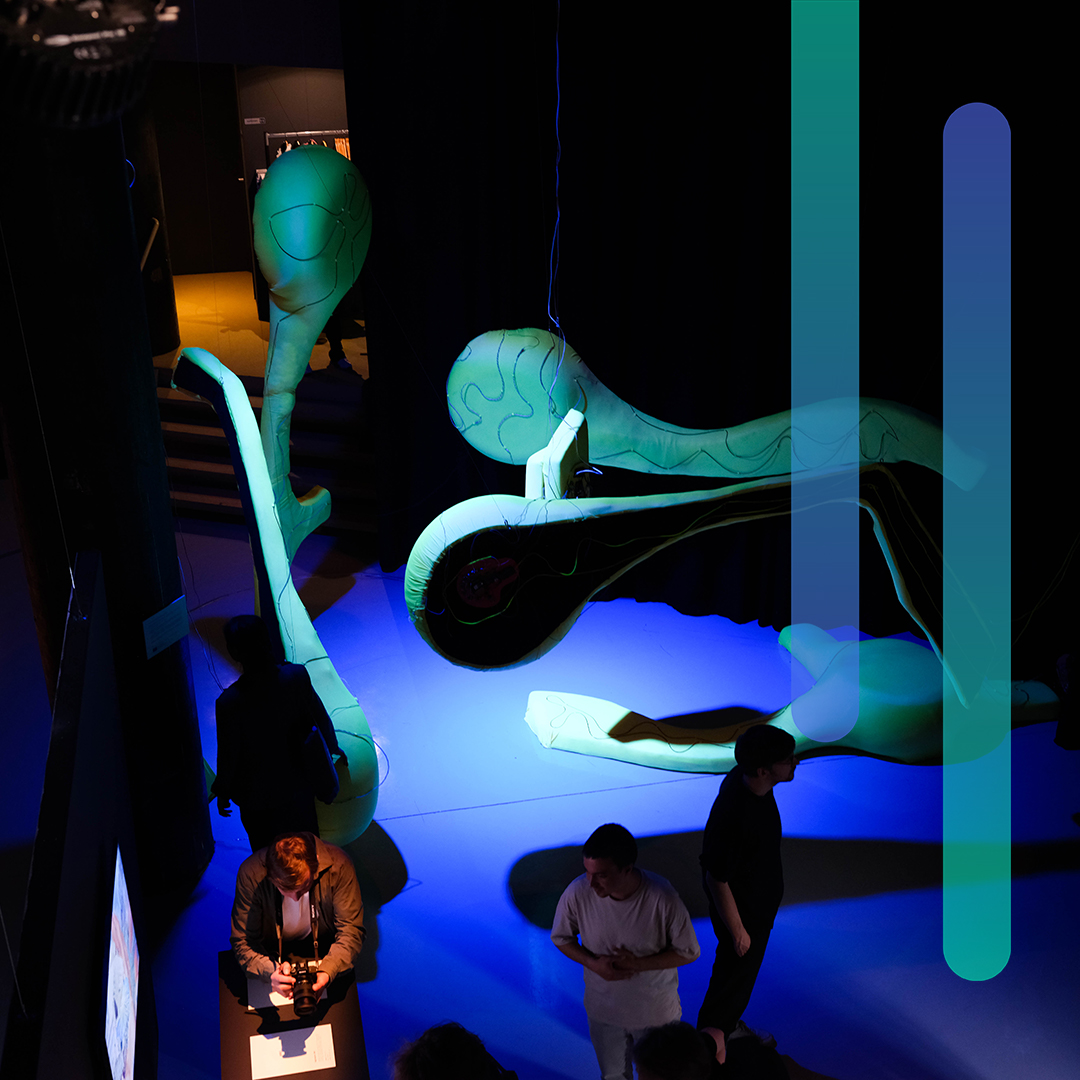
Dark Euphoria | In
C.D. – How did you actually meet XR?
Marlot M. – My version of XR is not linked to screens or anything. I remember I was working with a touch sensor. I was just trying to understand how it works. I was reading the sensor and it just showed a stream of numbers. I had my hand above the sensor (not touching yet) and the numbers went down and I was like “what ?”. That was such a moment for me, where I suddenly realised the sensor is seeing me, it’s measuring me. It’s showing me: you don’t end where your skin ends, you have electricity around. And then I was like “wow, if I can use that to show other people…”. If you understand that there is this energy, there is a relationship between things close to each other. And then imagining how to show that to someone, how to have an experience of that; create an experience of that for someone else in a way that they can then have that magic moment as well.
Dark Euphoria | In
C.D. – Wow. It’s a very sensitive first meeting, it was almost like a physical contact…
Marlot M. – I guess it’s not extended reality in the sense that it’s not creating something new but it’s actually taking this reality and extending what we can get out of it.
Leo S. – I share your enthusiasm, but for me it was less of a moment. I just gradually found myself into XR. My father was a programmer, first generation of programmers in my hometown, and he had this house office which was full with obsolete media, like floppy disks and CDs and these massive monitor screens. I grew up with this aesthetic of informatics/cyber addicts. Also, I did music (…) and music for me was exploring the sensations and messages through sound.
It was many moments… I went to London. I started working for this startup who made a product called Mogees. This was in 2015-2016. They just designed this sticky contact microphone together with an app for iOS. You could stick these microphones to any surface and they would turn any material into an instrument by detecting and recognising the sound vibration on a local machine learning system. That was a very advanced use of this technology: it extended the concept of sound and interface. At the time, this was an emerging tool looking for a real-life application. Bruno Zamborlin (Mogees founder), however, developed his vision creatively and collaborated with artists, musicians, and recently with the collective Fosbury Architecture at the Venice Biennale 2023. So there was a clear intersection of art and design.
(…)
This inspired me to go into interactive media design. So Marlot and I actually did the same bachelor. That’s how we know each other.
Marlot M. – And we’re also now both teaching there.
Leo S. – …Then I truly understood it’s not just about the technology, but it’s about how systems interrupt and how to design new systems to extend your understanding of technology itself but also of society, politics, ecology and even holistic approach. It goes all back to the floppy disks in my dad’s office.
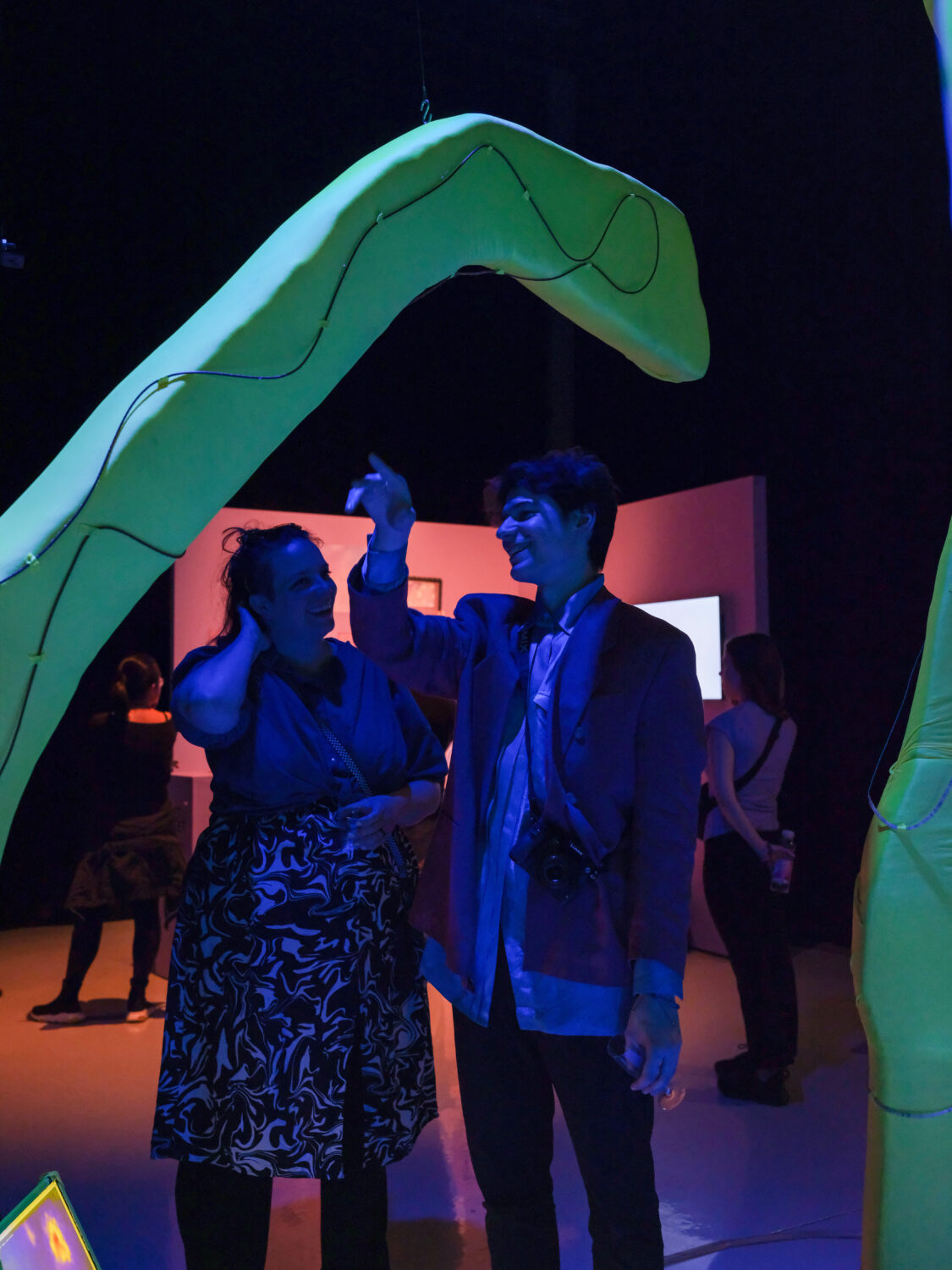
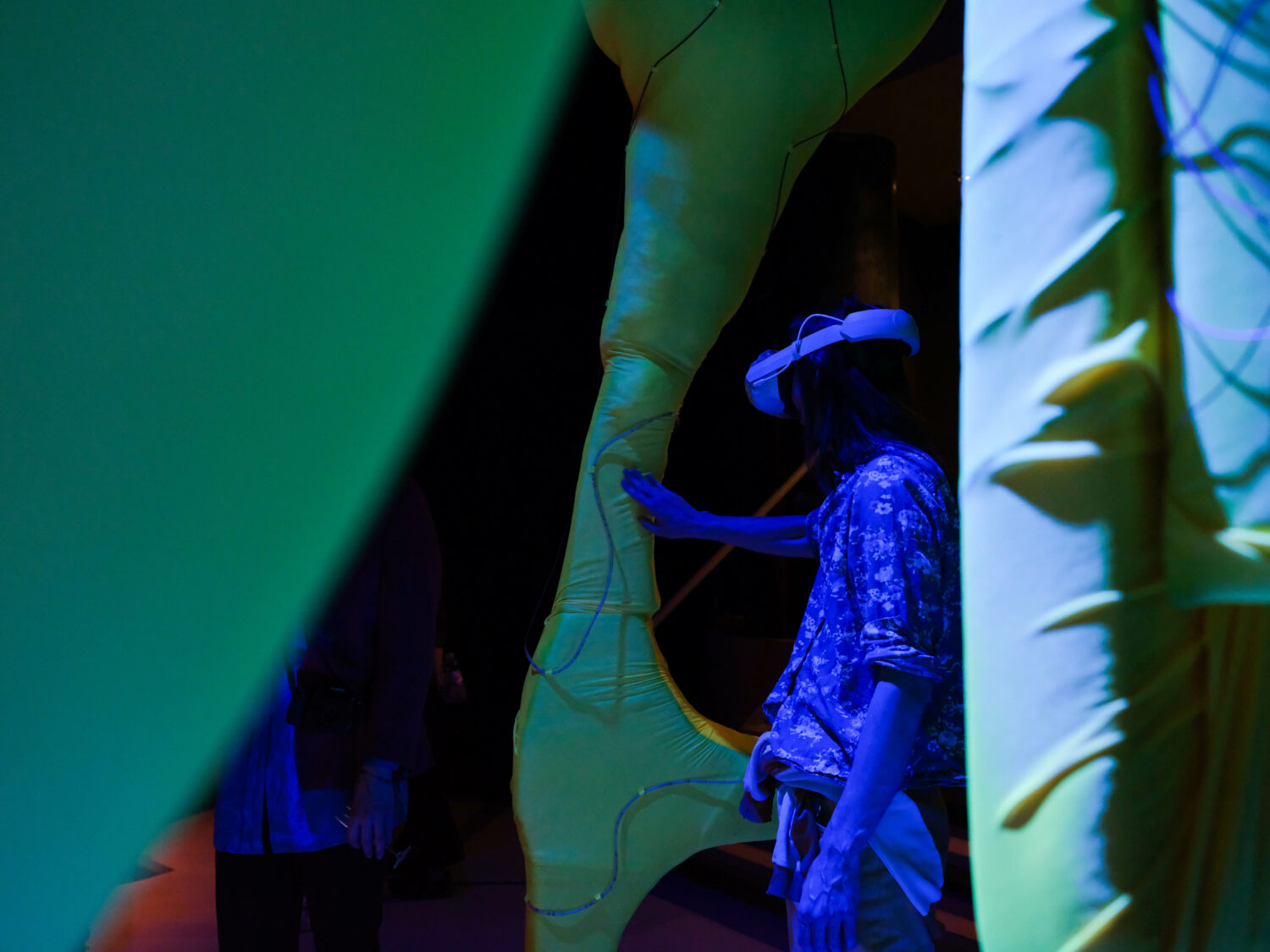
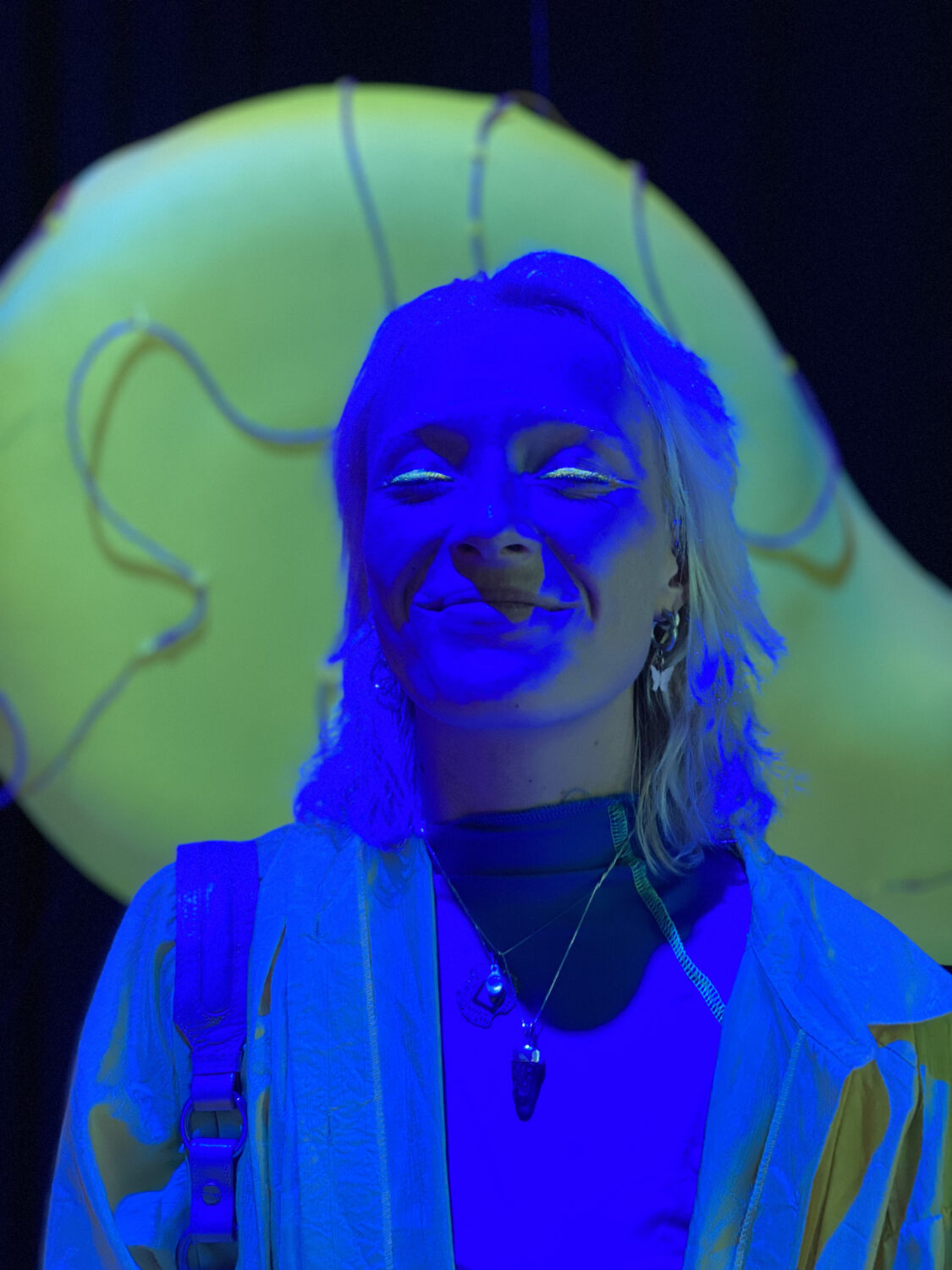
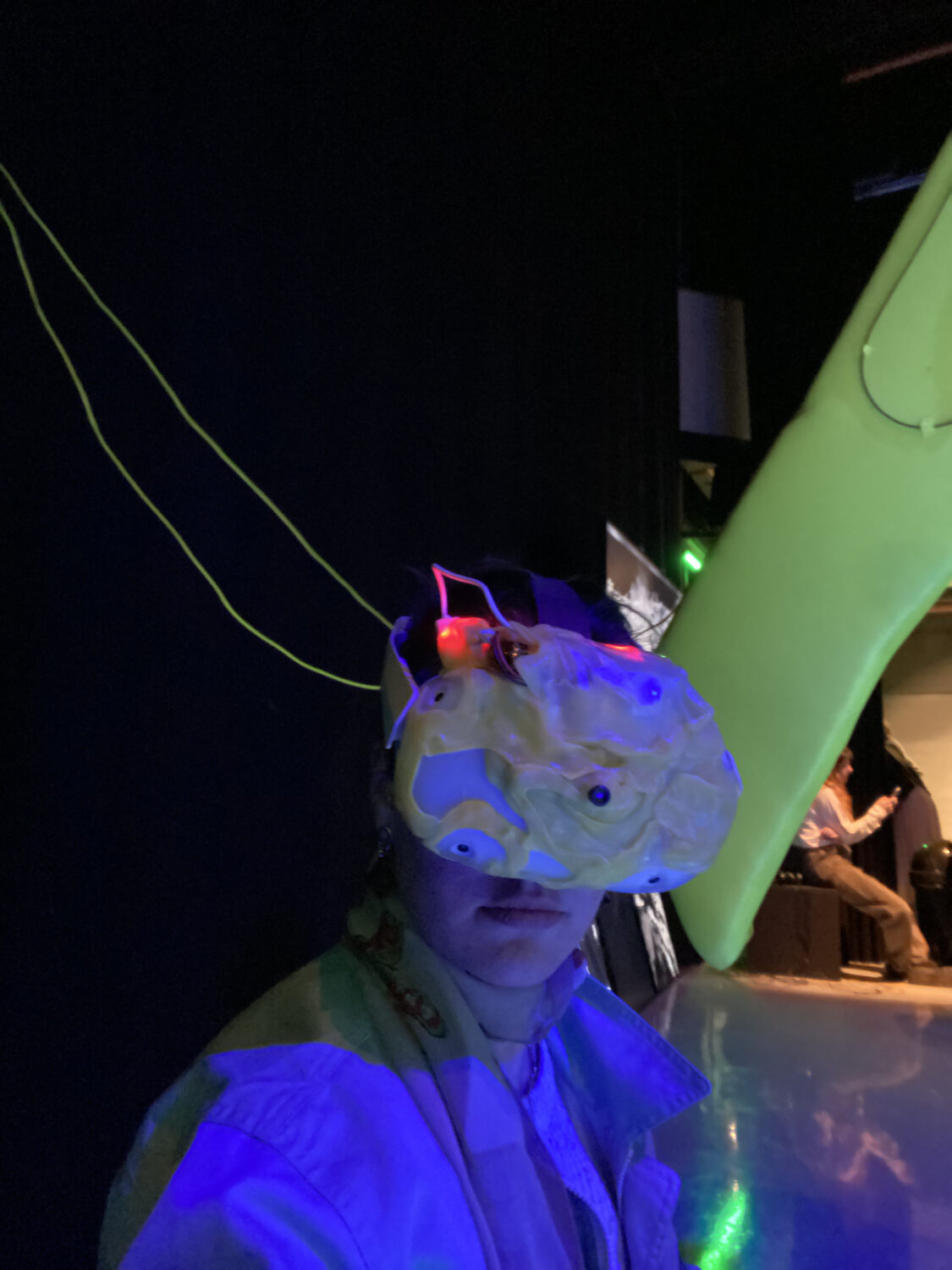
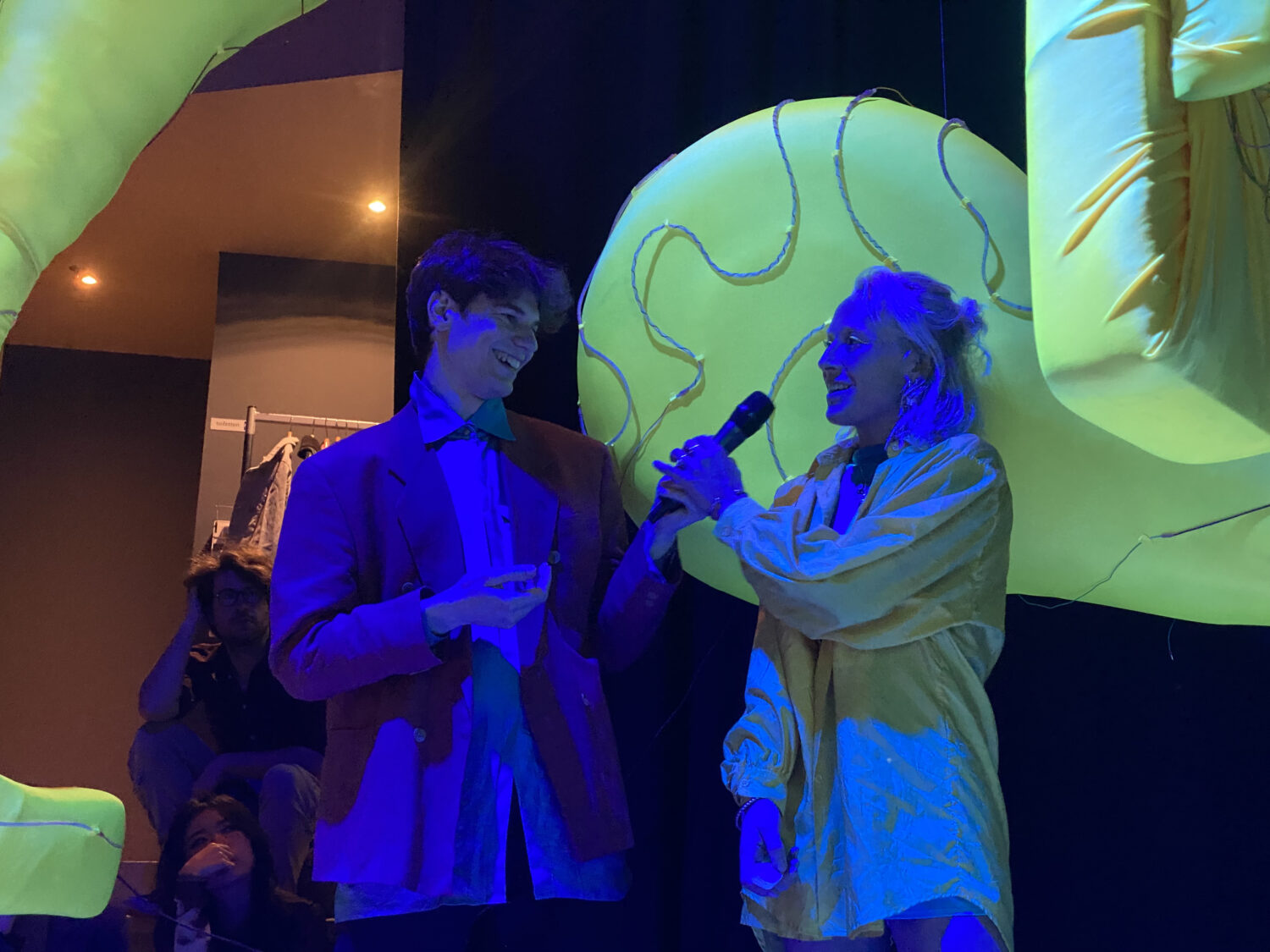
Dark Euphoria | In
C.D. – That’s a real journey.
Leo S. – …I guess it’s also a generational thing. I grew up with the internet, I was always looking on how to extend my sense of the world through technology. I come from a very boring small town where nothing was happening… I would spend afternoons on Google Earth.
Marlot M. – It’s so funny cause it’s like the exact opposite upbringing. I really hated technology. Thought it was not worth the real thing, until that magic moment in third year of I/M/D (Interactive/Media/Design). (…) So we kind of met in the middle.
Dark Euphoria | In
C.D. – You were like complimentary… What is your favourite XR tool?
Leo S. – Sensing machines in the wider spectrum of what a sensing machine means. I happen to work a lot with virtual reality, although I don’t like it. I just think the medium itself is not at the point that it should be. But I like to misuse these technologies. Together with Marlot, we personalized our own VR experience to be a thermal vision experience. Then it is about extending senses… So to me, the best XR tools to achieve that are sensing machines: the complex combinations of movement sensors, touch, sound, computer vision, pieced together in a customised design. For example, our VR experience allows you to generate a “thermal photogrammetry” of your surroundings through our own built-in thermal sensor. (…) It’s also about scales and how we use technologies as metaphors. If you think about the cloud, the bugs… There’s some sort of ecological literacy to technology somehow, but I don’t think it’s accidental. So yeah sensing machines are what for me achieves this other understanding of the world of technology of beings.
Dark Euphoria | In
C.D. – Do you have any specific software, open source tools?
Leo S. – As an educator, I tend not to always narrow down to one software. I always teach the students to just look for what fits your concept rather than fit your concept to the technology. It’s a collaborative process. TouchDesigner, Unity, Processing, Blender… I often try to use open software. Coding: C++, Java, Python. For the project “The Collective Algorithm of Care” we prototyped it in TouchDesigner and Arduino, because we needed something quick, and that’s great for prototyping quickly. But if we were to redo this we would go low level cause of course then you encounter performance issues, but this is all technical stuff… (To Marlot) You were using Arduino, ESPs, all of these technologies.
Marlot M. – Added to that, I also have non-digital tools. I work a lot with materials. How are we gonna make this thing, how is it gonna exist in a way that an interaction can physically take place.
I really try to have no waste when working with materials. This material I used on the headset is like forever reusable plastic. You melt it by putting it in boiled water so it becomes clay, and then in less than a minute it’s hard again. When you’re done with your prototype, you can just throw it back in the water and use it for something else. It’s called Polymorph Plastic. (Amazon Link)
As per the coding parts, I work mostly with ESP32 cause they can do everything faster and they already have some sensors in them like the electromagnetic field sensor… This project I coded it in Arduino. And I used UDP to communicate with the laptop and then the laptop runs TouchDesigner and receives the information from the ESPs, and then sends it to the Oculus. And there’s a lot more steps in between.
It’s all open source, available on my GitHub !
Leo S. – One of the reasons we use certain softwares is also like: how can we choose softwares that communicate with each other? In TouchDesigner, there is a UDP protocol that is so easy to use and that is sendable to Oculus through AirLink or OSC. It was a lot about networking protocols.
It’s relevant to point out that this was the first collaboration and that we come from two different upbringings. I’m so detached from material, but I loved the way that it told a lot about the work during the process. We also tried melting wax at some point. We tried so many things. (…) It’s again, about scales, about how you read them. Wax melts, that means it’s hot. It’s just a different visualisation and measure of what temperature is.
Marlot M. – Extended reality doesn’t just have to be with the first things you think of, which are like a screen or anything digital. I think you can extend your reality by leaving something in the sun and by knowing that it’s gonna melt or not. I guess humans are also special ‘cause we have imagination.
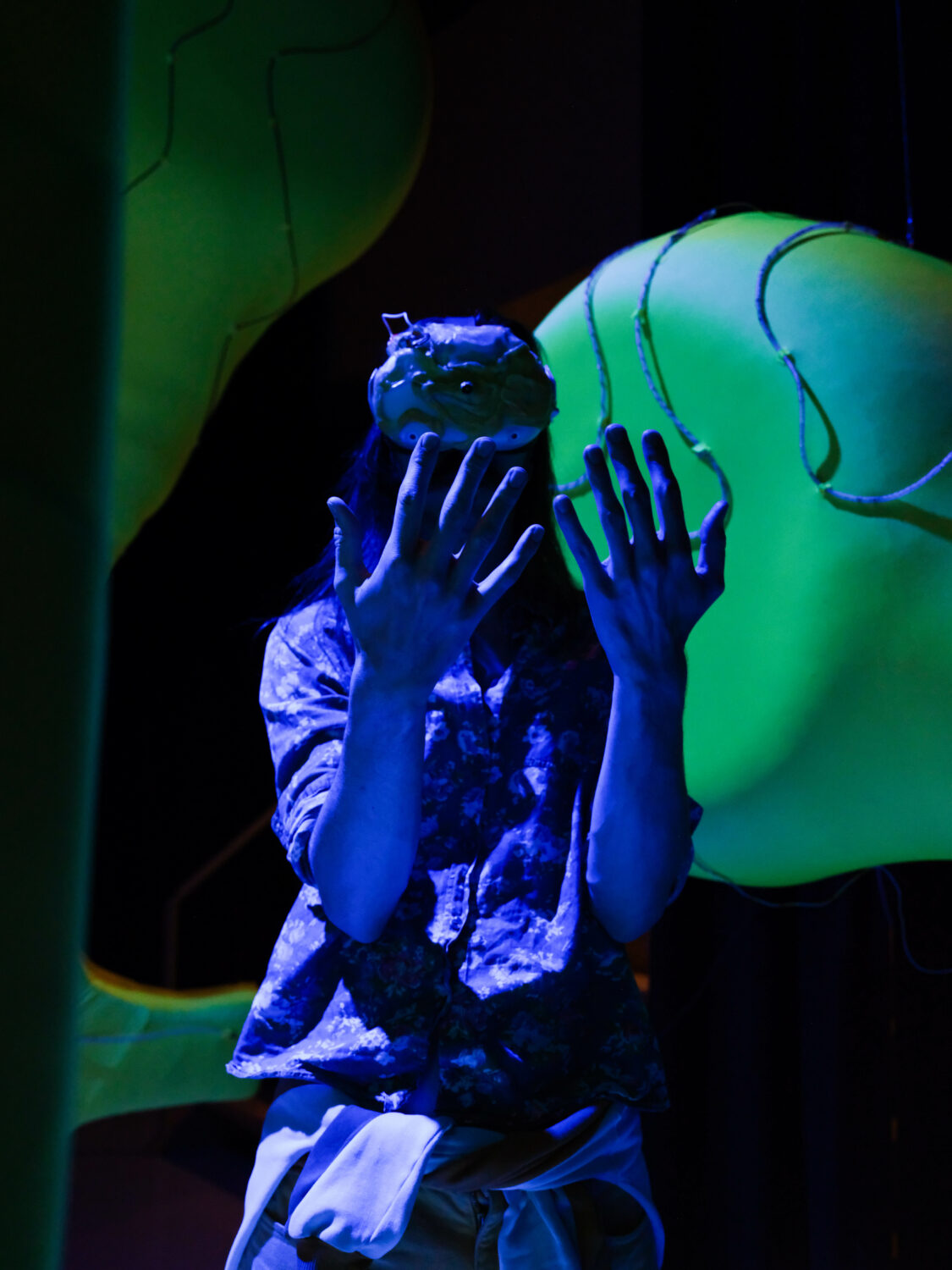
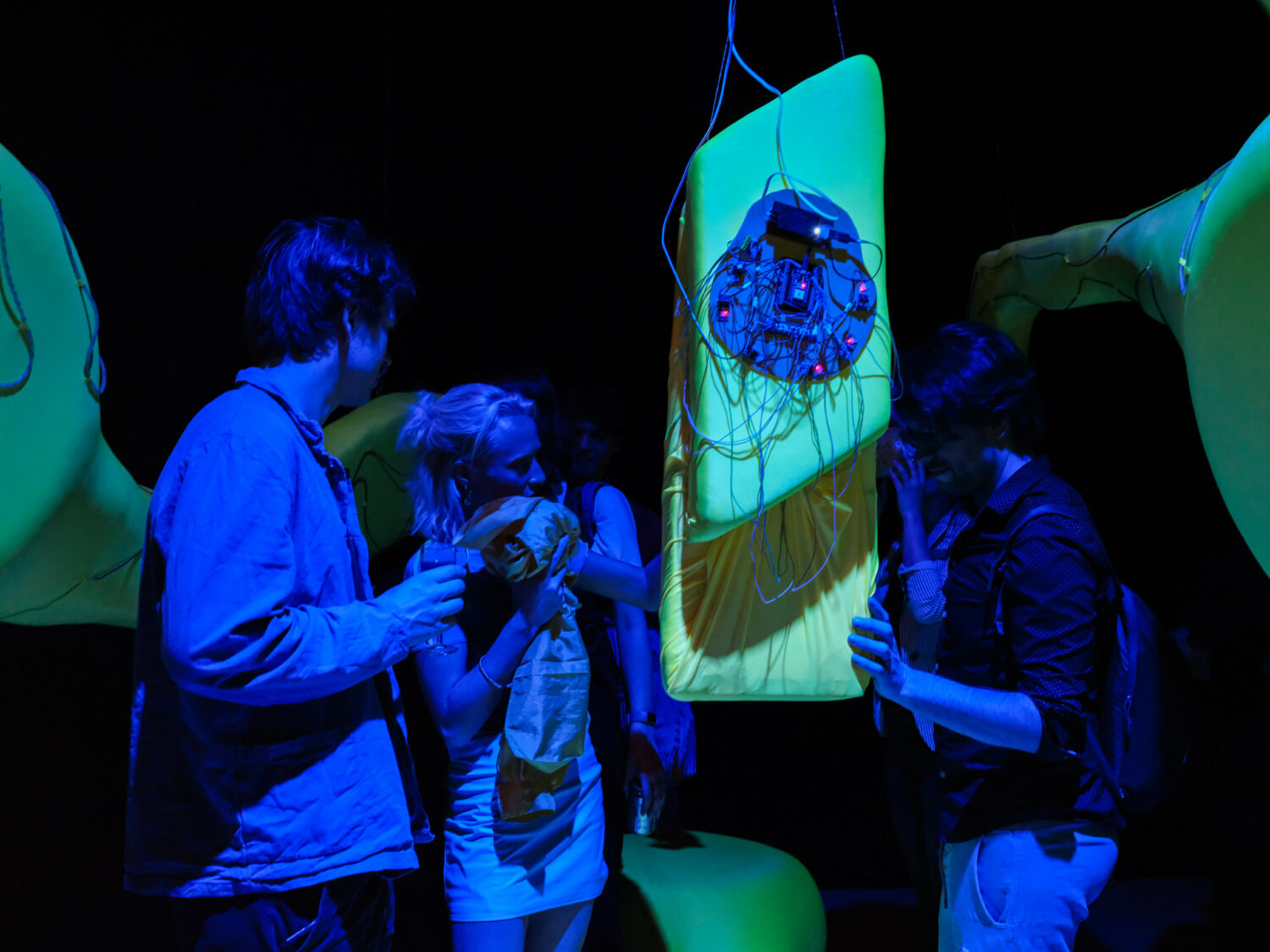
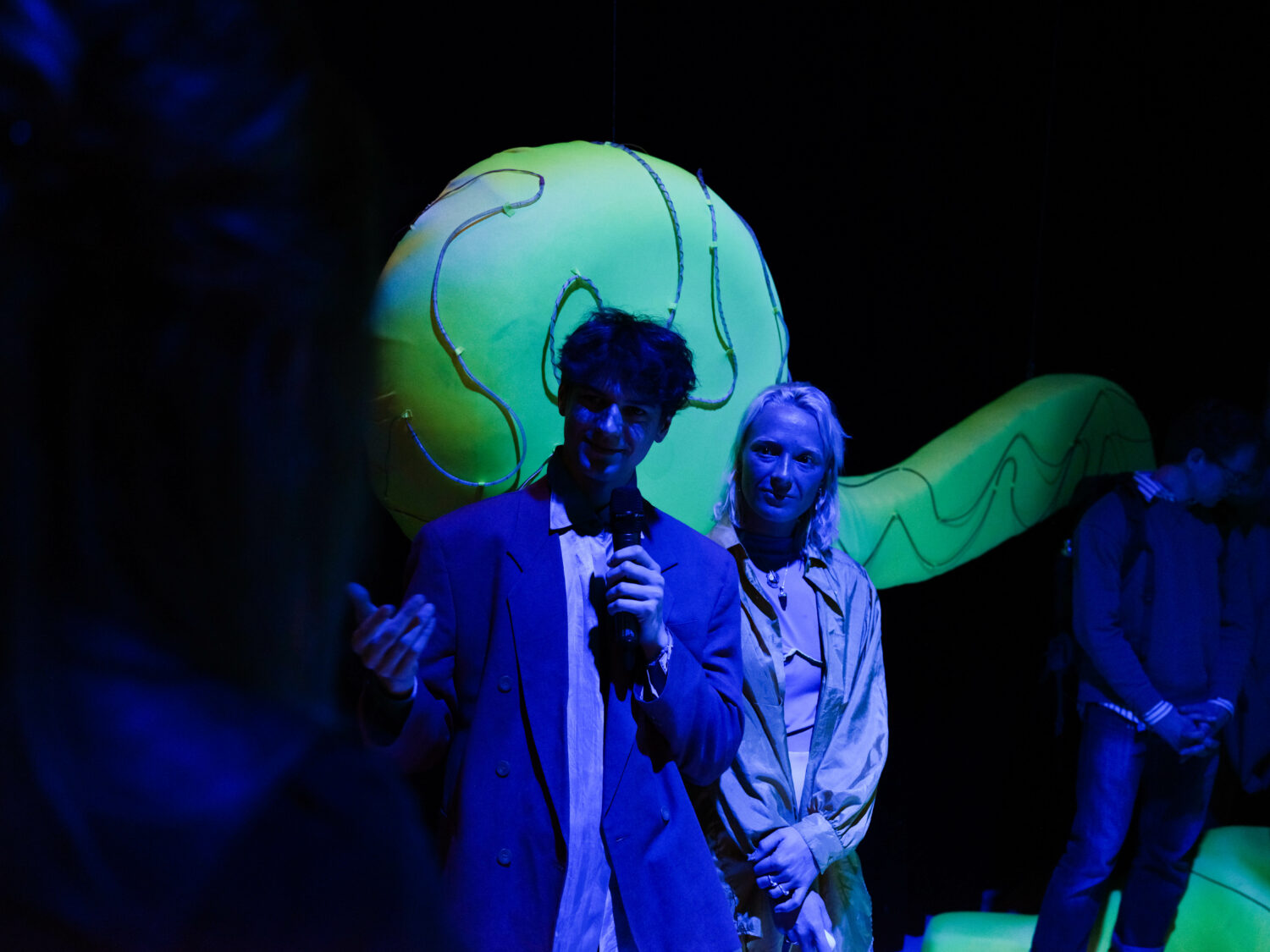
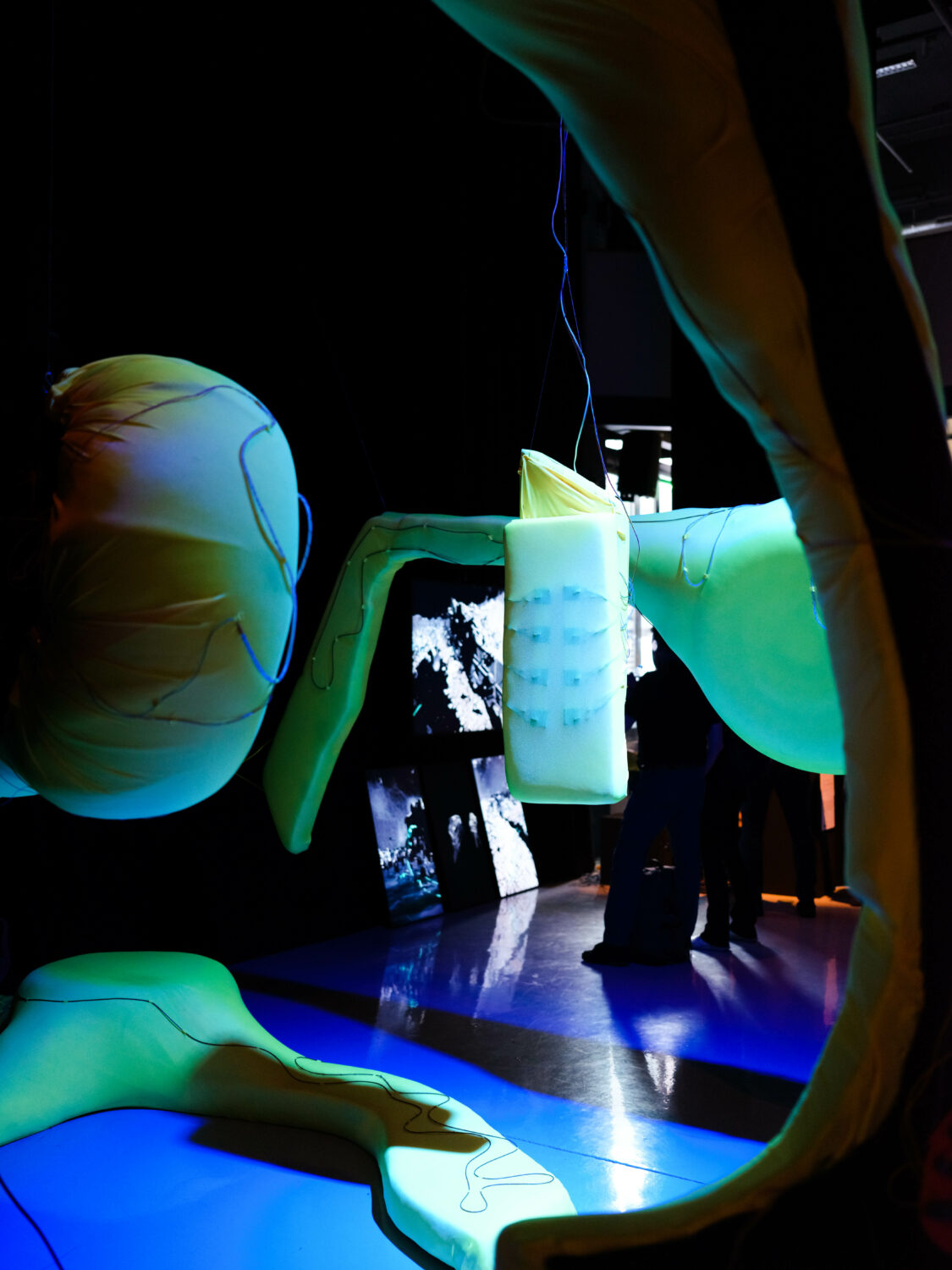
Dark Euphoria | In
C.D. – Do you have some tips to find resources about XR?
Leo S. – Books, tutorials, newsletters… (To Marlot:) I think actually it was you in my graduation year, you brought New Dark Age by James Bridle. (…) I think we both love the whole philosophy and literature behind that and Ways of Being.
Marlot M. – It’s the first time I read something from an artist with information that was really tangible. He made all these concepts that people talk about a lot but they just stay kind of in the air. And you’re like, okay, but how does that exist in my personal everyday life? He really uses his artist’s perspective but doesn’t actually talk about art. He talks about these things that are happening in technology and what it could mean… He also takes the natural, the organic, let’s say non-human life and in the later book, Ways of Being, he really explores other forms of intelligence that are not ours.
Leo S. – I have another book which brings a lot of knowledge from different disciplines. The theory of intra-action from Karen Barad: Meeting the Universe Halfway
Marlot M. – and… The laws of Thermodynamics. It’s really interesting when you read about it and if you’re really trying to understand the basics of interaction between two things. If you can apply those laws and create a meaning out of it – not just like a definition – then it could be a nice tool.
Leo S. – We should credit Newton. (…) I’d recommend the newsletter of Cybernetic Forests., talking about understanding AI and also a lot of the language behind it… To me it’s really important to allow participation in the understanding of technology, because then, through that, you also allow participation in decision making. (…) And actually, our work started from Chris Salter’s Sensing Machines book.
Marlot M. – If you’re unsure on how to get started on the material side or how to make something become a sensing machine, there’s this website called HOW TO GET WHAT YOU WANT. It has infinite tutorials on how to basically make sensors; out of textiles, mostly. It’s super in depth and it’s really DIY approach.
Leo S. – Also I’m part of RGBdog Studio where I am now developing a Data Degrowth workshop for Mozilla Festival. It is a design-thinking session to rethink data as an ecologically impactful asset, and how we could reduce their production as consumers. It jokingly takes inspiration from Marie Kondo’s concept of “joyous decluttering”, but then applied to our data, what data give us joy? At the end of the session, I ask the participants to deposit their dearest data in a Floppy Disk, which makes them confront the size of their images and videos in a very tangible way. Tangible becomes understandable, and understandable becomes accessible. With the right language, scales, and metaphors, technology can become more participatory.
Thank you !
Dark Euphoria | In
Interview of Marlot Meyer & Leo Scarin by Céline Delatte, Communications Officer for RIT’s partner Dark Euphoria as part of the V2_ artistic residency in Rotterdam.
MARLOT MEYER
Marlot Meyer – INTER(Active|Net)-MULTI(Media|Disciplinary)-ARTIST
LEO SCARIN
Leo Scarin – Artist, designer and educator in creative technology


